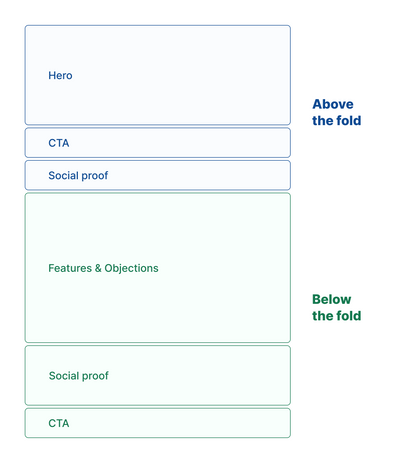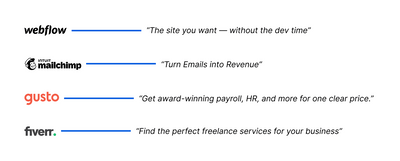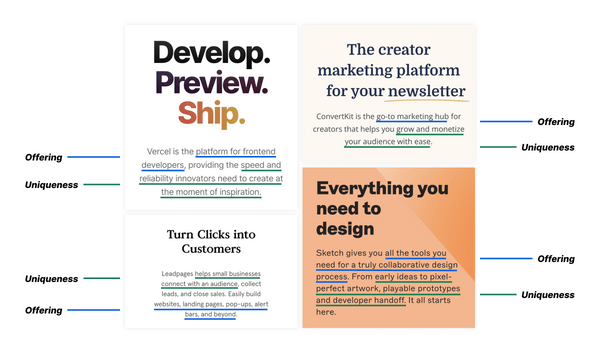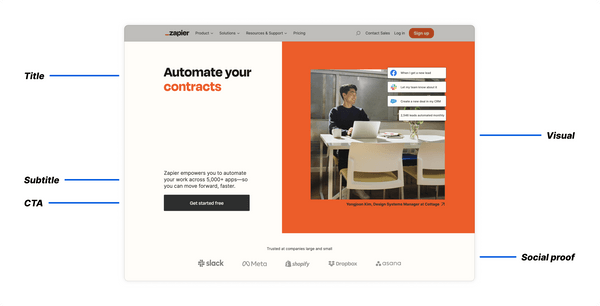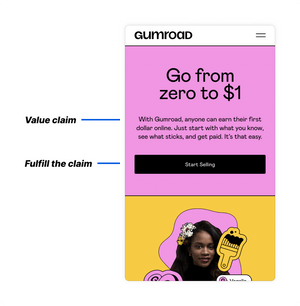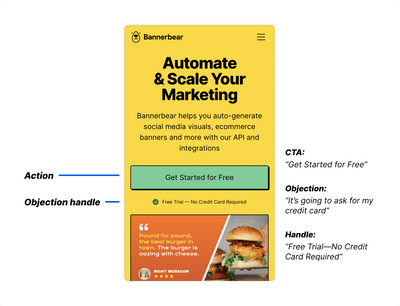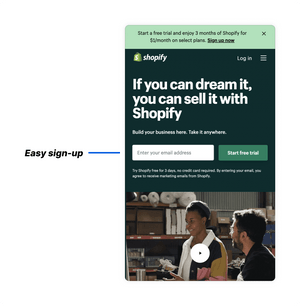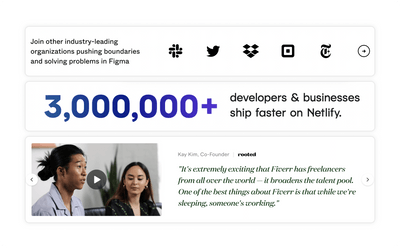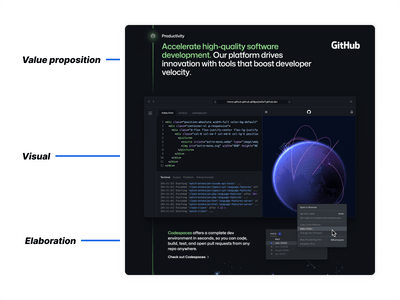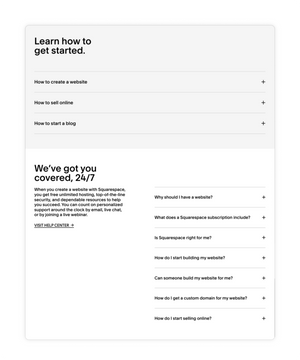How to write a high-converting landing page
Posted on 02 Dec 2022
How is a landing page structured?
An effective landing page is structured into 2 main parts: above-the-fold and below-the-fold. Each part of the page contains one or more of the four main elements: Hero, Social proof, Call to action, and Features and Objections.
Hero
The first thing your reader sees when they land on your page is the “Hero”, also called “above-the-fold”. The hero showcases your brand’s value proposition, with a strong claim persuading visitors to take the next step.
From an initial glance at the hero, the visitor should immediately know what you offer based on the title, subtitle, and visual context.
Title
The goal of your title is to capture your visitor’s interest so they want to continue scrolling. It must concisely describe what you are selling and the value you provide in no more than a few words.
Here are a few strong examples of to-the-point titles:
You can clearly convey your value by addressing any of these questions:
What do you do?
Gusto does payroll and HRHow does your offering handle common objections?
Objection: “my site design will take forever to develop”
Webflow makes development quickHow does your offering benefit the user?
Mailchimp converts email subscribers into paying customers
Subtitle
The subtitle expands into detail about how your offering creates the value as promised in your title. In one or two sentences, the subtitle should tell the reader what you’re offering and how it’s unique.
Visual
Support the claims you’ve made in the hero title and subtitle with a visual of your offering using images or quick videos.
Visually demonstrate to the reader what the experience will be like for them when they buy into the value of your offer.
Call to action (or CTA)
Call to action, or CTAs, are buttons and email captures your reader interacts with to easily take the next step.
CTAs will commonly state “Get started” or “Sign up”.
Strong CTAs will:
- Get the reader to fulfill the value claimed in your title
- Handle the reader’s biggest objection
- Or make it easy to sign up on-the-spot.
Social proof
Social proof are real-life examples where the value claimed in your title has fulfilled on its promise. It gives credibility to your claim, and it should make your reader think everyone already knows about what you offer.
The social proof element can include customer or press logos, glowing testimonials, and product usage stats or customer count.
Features and objections
Features and objections is the first and largest section a visitor scrolls to right below the fold. It highlights your main features to really drive home how you will fulfill the value promised above the fold.
Copy accompanying your features should address the biggest objections your customers have about the feature. Compelling feature blocks will include:
- A title that states the value it offers.
- A paragraph elaborating on the value stated and handle the objections
- A visual reinforcing the value promised in the feature title
You can also add an FAQ section below the main features to address more reader objections.
Testing it out
The goal of your landing page is to sell what you are offering, and you will want to make sure the copy does exactly that.
Two ways you can test the effectiveness of your copywriting are:
- A/B testing, also called “split testing”
- Collecting feedback from people both in and out of your market. This means you will have the chance to directly learn the most common objections. Take note of how they respond to each element of your page and find the common themes around what they say.
